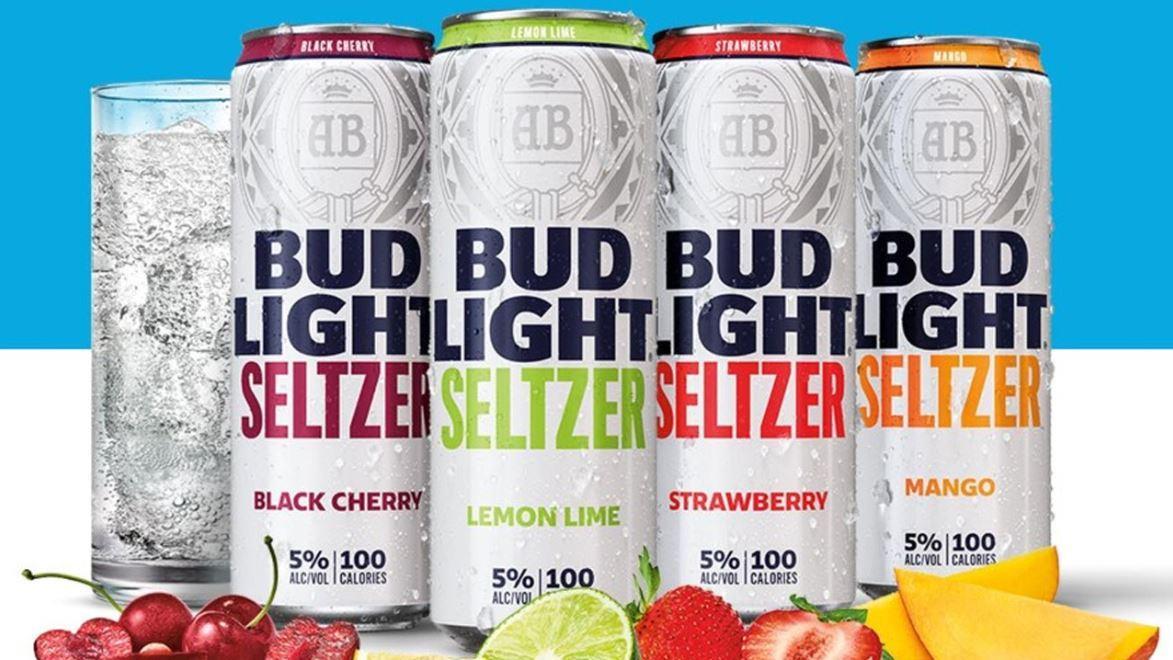Anheuser-Busch banks on hard seltzer as beer drinking declines
Bud Light Seltzer takes on White Claw, Truly in low-alcohol beverage category
The aroma of black cherry fruit fills the air at the Anheuser-Busch InBev brewery in Baldwinsville, New York -- about 15 miles outside Syracuse -- where 90,000 cans of Bud Light Seltzer will roll through production by the end of the day, as the king of beers gears up to infiltrate the saturated alcoholic seltzer category.
Anheuser-Busch InBev's Bud Light Seltzer rolls out nationwide Monday, the company's third spiked seltzer in its portfolio, competing with dominant players like White Claw and Truly. It has invested more than $100 million in the category and will promote the new beverage alongside its household beer brand, Bud Light, in a 60-second ad during Super Bowl LIV next month. Michel Doukeris, Anheuser-Busch CEO and AB InBev’s North American zone president is bullish about the national launch.
“Fifty-percent of alcohol drinkers haven't tried seltzers yet. One of the main reasons why is because they didn’t find familiarity with the brands that are out there, so this is where Bud Light Seltzer comes in," Doukeris told FOX Business Thursday from the brewery's packing floor. “We are prepared for a big launch. When you talk to retailers, wholesalers and consumers, it's becoming the most anticipated launch in the beer industry for the year."
Michel Doukeris, Anheuser-Busch InBev Chief Executive Officer for North America. (Bud Light/Getty Images).
Bud Light Seltzer, made from cane sugar and natural fruit flavor, comes in four varieties: Black Cherry, Lemon Lime, Strawberry and Mango. Each contains 100 calories, 1 gram of sugar, 2 grams of carbs and has 5 percent alcohol by volume. The product will be sold as 12-packs and individual 25-ounce cans.
FOOD AND DRINK INNOVATIONS FOR 2020
Like beer, Bud Light Seltzer goes through a multi-step fermentation process using cane sugar and water instead of barley and hops. The cane sugar is fermented and undergoes a five-step filtration process. Then, the natural flavors are added and the hard seltzer gets taste-test approved.
AB InBev established itself in the alcoholic seltzer category in 2016 when it acquired Boathouse Beverage, the producer of SpikedSeltzer. It rebranded Boathouse as Bon & Viv, marketed toward millennial women as a healthier alternative to beer in mermaid-clad cans with flavors like pear elderflower and cranberry. It contains less alcohol than Bud Light Seltzer, with 4.5 percent ABV, 90 calories and zero sugar. And last year, the beer giant launched Natural Light Seltzer in two flavors: mango and peach, and cherry and lime.
Seltzers surpassed $1.5 billion in in-store sales by the end of 2019, according to the most recent data from Nielsen. And the segment continues to maintain triple-digit growth rates, up 213 percent in dollar growth this year. The number of hard seltzer brands has nearly doubled in the past year. There were around 22 major brands on the market in 2018, and today there are more than 40.
Mark Anthony Brands-owned White Claw continues to dominate as the No. 1 hard seltzer on the market, accounting for 59 percent of the beverage segment, followed by Boston Beer Company’s Truly Hard Seltzer, according to Nielsen.
AB InBev’s Bon & Viv is the third best-selling seltzer in the category, data shows. Natural Light hard seltzer, takes the No. 4 spot of top-selling hard seltzer on the market. The more affordable product seems to appeal to the college crowd, with more alcohol (6 percent ABV) and 133 calories as opposed to Bud Light Seltzer’s 100.
A number of alcohol companies have their own versions of spiked seltzer, including Smirnoff and Two Roads Brewing Company amid declining beer sales. Beer's share of total alcohol servings fell to 49 percent, down by around 1 percent in 2018, according to the Beer Institute.
HEINEKEN AND THESE BOOZE COMPANIES SUPPORT 'DRY JANUARY'
Doukeris doesn't anticipate that spiked seltzer will cannibalize AB InBev's beer sales, however.
"When you look at the market as of today, [spiked] seltzers are bringing incremental sales to the overall [beer] category, so this is really good," he said.
| Ticker | Security | Last | Change | Change % |
|---|---|---|---|---|
| BUD | ANHEUSER-BUSCH INBEV | 65.01 | -0.83 | -1.26% |
Analysts say consumer demand for lower alcohol products with fewer and more natural ingredients and additives is what continues to drive the trend.
“America's love for hard seltzer is far from fizzling out," Danelle Kosmal, vice president of Nielsen's Beverage Alcohol Practice, said. "Hard Seltzer's rise was perfectly aligned with the rise of the mindful drinking trend in the U.S. As consumers shifted towards more mindful drinking, hard seltzer's entrance into the alcohol space perfectly quenched the thirst for a lighter beverage option."
“Compared to other available drinks, Hard Seltzers are generally low in sugar, low in carbs, low in calorie and lower in ABV offerings."
GET FOX BUSINESS ON THE GO BY CLICKING HERE
AB InBev is also pivoting to capture more of the millennial market. Last year, it acquired Babe Wine, its largest investment in wine to date, which was co-founded by Instagram influencer Josh Ostrovsky, also known on social media as "The Fat Jewish."
CLICK HERE TO READ MORE ON FOX BUSINESS
The Business of Food explores the rapidly changing $1.5 trillion food industry every Tuesday on FOX Business.

